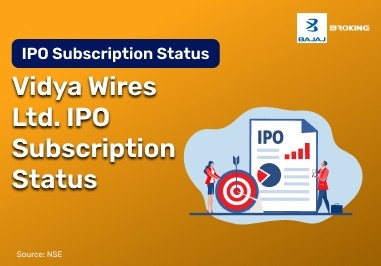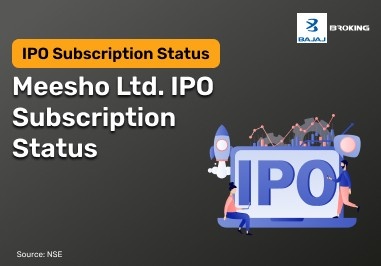The Indian monsoon season, and the Southwest Monsoon from June to September in specific, is crucial to many aspects of the economy of India, including commodity markets. The agricultural sector in India is dependent on rainfall for crop yields, and the monsoon performance can directly affect the supply and prices of agricultural commodities. Due to its impact on rural earnings, consumer spending, and economic attitude, the monsoon has a greater impact on businesses outside of agriculture. Traders monitoring market activity may find it helpful to understand these trends. The India Meteorological Department (IMD) issues predictions that are closely monitored for clues about rainfall trends, which may then be interpreted for possible influences on various commodity groups.
Up to June 2025, the IMD predicted an above-normal monsoon for the nation overall, with certain local variations. This kind of prediction has the potential to anticipate agricultural production. A strong monsoon tends to be associated with greater crop yields, and this in turn can result in a higher supply of farm products and possibly impact their prices. A poor or unpredictable monsoon, on the other hand, may result in supply deficits and price hikes.
Sectors Affected by Monsoon
The influence of the monsoon extends beyond agriculture, impacting several other sectors of the Indian economy. Agriculture experiences the most direct effects, as adequate rainfall supports the growth of Kharif crops, including rice, maize, pulses, cotton, and oilseeds. A good monsoon often leads to higher yields, increasing market supply for these commodities. Fast-Moving Consumer Goods (FMCG) companies indirectly benefit, as improved agricultural output raises rural incomes, boosting discretionary spending on consumer products. The automobile sector, particularly two-wheelers and tractors, also sees an indirect impact from increased rural demand. Companies supplying fertilisers and agrochemicals are directly affected, as a favourable monsoon typically leads to higher demand for their products. While less direct, a good monsoon can contribute to broader economic growth and rural development, indirectly benefiting the cement and infrastructure sectors. Finally, banks and Non-Banking Financial Companies (NBFCs) with rural exposure are indirectly influenced by the rural economy's health, affecting credit uptake and repayment capabilities.
Agri-Stocks and Monsoon Trends
Agricultural stocks, often termed "agri-stocks," represent companies whose operations are directly tied to the agricultural sector, and their performance frequently aligns with monsoon trends. In years characterised by normal or above-normal rainfall, companies that supply agricultural inputs, such as seeds, fertilisers, and pesticides, typically observe an increase in sales volumes as farmers invest more in their crops. Higher agricultural output can also benefit companies involved in agri-processing or storage. Conversely, a deficient or inconsistent monsoon can result in reduced crop yields and lower farm incomes, consequently leading to decreased demand for agricultural inputs. This situation can negatively affect the revenues and profitability of agri-stock companies. The impact can also be specific to certain crops; for example, businesses heavily reliant on a particular crop might see their performance linked to how the monsoon affects that specific crop's yield and quality. Additionally, government policies like Minimum Support Prices (MSPs), agricultural subsidies, and import/export regulations also influence agri-stocks, potentially either enhancing or mitigating the monsoon's effects.
Monsoon Forecast 2025 for Traders
The India Meteorological Department's (IMD) monsoon forecast for 2025 indicates a likelihood of above-normal rainfall, specifically projecting 106% of the Long Period Average (LPA). This overall outlook suggests a generally positive scenario for the agricultural sector across India, implying sufficient water availability for crop sowing and growth in most regions. However, it is relevant to consider the regional distribution of this forecast. Central India and the South Peninsular region are anticipated to receive above-normal rainfall, while Northwest India is expected to experience normal rainfall. Conversely, Northeast India might see below-normal rainfall. Traders often analyse these regional breakdowns to understand the potential impact on specific commodities or companies with concentrated operations in particular regions. A favourable monsoon for the Monsoon Core Zone (MCZ), which encompasses a significant portion of India's rain-fed agricultural land, creates a supportive environment for the upcoming Kharif cropping season. This can influence the supply of major crops and their prices in both spot and futures markets. The timeliness of the monsoon's onset and its progression are also critical factors; an early and steady monsoon facilitates timely sowing, whereas delays or prolonged dry spells during the season can introduce uncertainties, even within an overall favourable forecast.
Trading Strategy for Agri Stocks
For traders looking to participate in the agricultural stock segment during the monsoon season, a structured approach can be helpful:
Monitor IMD Updates:
Keep track of the India Meteorological Department's official forecasts and real-time updates on monsoon progression, including regional rainfall distribution. These updates can provide early indications of potential supply scenarios.
Analyse Commodity Futures:
Observe movements in agricultural commodity futures contracts (e.g., NCDEX for Indian commodities like chana, soyabean, and guar). Price trends in these futures can reflect market expectations regarding supply and demand.
Study Company Fundamentals:
Beyond the monsoon, research the fundamentals of individual agri-companies. This includes their financial health, market share, product portfolio (e.g., focus on specific crops or inputs), and their ability to manage risks.
Volume and Price Action:
Pay attention to trading volumes and price action in agri-stocks. Increased volumes alongside price movements around monsoon-related news can indicate shifting market sentiment.
Identify Diversified Players:
Consider companies that have a diversified product portfolio or operate across different agricultural segments, as they might be better positioned to mitigate risks from localised monsoon deficiencies.
Risk Management:
Implement risk management strategies, such as setting stop-loss orders, to manage potential losses from unexpected monsoon deviations or sudden market reversals.
Monsoon Effect on FMCG & Fertilisers
The monsoon's influence extends significantly to the FMCG and fertiliser sectors, albeit through different mechanisms.
FMCG (Fast-Moving Consumer Goods):
A good monsoon leads to higher agricultural output and, consequently, increased rural incomes. Since a significant portion of FMCG sales in India comes from rural markets, this surge in disposable income often translates into higher demand for consumer staples, personal care products, and household goods. Companies with strong rural distribution networks and a focus on mass-market products tend to benefit. Conversely, a weak monsoon can reduce rural purchasing power, leading to sluggish sales for FMCG companies. While urban demand remains a factor, rural consumption often acts as a significant growth driver for the sector, especially during favourable monsoons.
Fertilisers:
The fertiliser sector has a direct and immediate link to the monsoon. Farmers apply fertilisers to their fields to enhance crop growth and yields. A timely and adequate monsoon encourages farmers to undertake proper sowing and apply the necessary nutrients. This leads to increased demand for various types of fertilisers (urea, DAP, NPK complexes). Companies manufacturing and distributing fertilisers typically see a rise in sales volumes during a good monsoon season. Policy decisions regarding fertiliser subsidies by the government also influence the sector, but the underlying demand is closely tied to the monsoon's performance. A deficient monsoon, on the other hand, can lead to reduced fertiliser consumption due to lower planting activity or financial constraints for farmers.
Managing Risks in Seasonal Trading
Trading influenced by seasonal factors like the monsoon carries inherent risks that require careful management. Weather forecasts, including monsoon predictions, can change, and the actual rainfall distribution may differ, introducing uncertainty and swift price movements in agricultural commodities and related stocks. Government policy shifts concerning agriculture, such as changes in Minimum Support Prices (MSPs), export-import duties, or subsidies, can impact market prices and sectoral performance, sometimes unexpectedly. Global supply-demand dynamics, international commodity prices, and geopolitical events can also influence domestic markets, occasionally outweighing local monsoon effects. Heavy rainfall or floods can disrupt supply chains, affecting the timely movement of goods and potentially causing localised price spikes or shortages, irrespective of overall production. Even with good rainfall, pest infestations or crop diseases can damage crops, leading to lower yields. Market sentiment can be highly reactive to monsoon news, potentially causing exaggerated price movements. It is important to differentiate between short-term emotional responses and fundamental shifts.
Long-Term Bets in Monsoon-Sensitive Sectors
While the monsoon introduces seasonal changes, certain opportunities within monsoon-sensitive sectors can align with longer-term investment perspectives. Investments in agricultural infrastructure, such as irrigation systems, cold storage facilities, and agri-logistics, address enduring needs for modernization and efficiency in agriculture, potentially reducing reliance on rainfall variability over time. Companies engaged in the development and implementation of advanced agricultural technologies, including precision farming techniques, drought-resistant seeds, or smart irrigation systems, may experience sustained growth by enhancing productivity and resilience. Financial institutions and fintech companies expanding their services into rural areas, offering credit and other financial products to farmers, can benefit from the structural growth of the rural economy beyond just the immediate monsoon cycle. Large Fast-Moving Consumer Goods (FMCG) companies, characterised by strong brands and extensive rural distribution networks, are often considered long-term investments. Their capacity to adapt to evolving consumer preferences and maintain market share within a growing rural economy can provide consistent returns. Companies involved in hydropower generation may also benefit from consistent water availability due to a favourable monsoon, contributing to national energy security goals. Furthermore, businesses focused on value addition in agricultural produce, such as food processing, dairy products, or specialised agri-commodities, can leverage higher output from good monsoons to meet changing consumer demands.
Conclusion
The monsoon season in India continues to be a significant factor influencing commodity prices and the performance of various sectors. The IMD's 2025 forecast of an above-normal monsoon suggests a supportive environment for agricultural output, which can then cascade into improved rural incomes and demand for a range of goods, including those from the FMCG and fertiliser industries. Traders often watch these weather patterns for potential shifts in supply-demand dynamics in agricultural commodities.
However, there are many other elements besides rainfall that affect market dynamics, which are complicated. Government regulations, worldwide commodity prices, and general economic patterns all have an impact. To create their opinions on market movements, traders usually combine monsoon forecasts with market information and other analytical tools. Understanding these interconnections can contribute to a more comprehensive view of the market landscape during the monsoon period.
Disclaimer: This article is for informational purposes only. It is not financial advice and does not recommend any specific investments. Readers should conduct their own research and consult with a qualified financial advisor before making any investment decisions.














